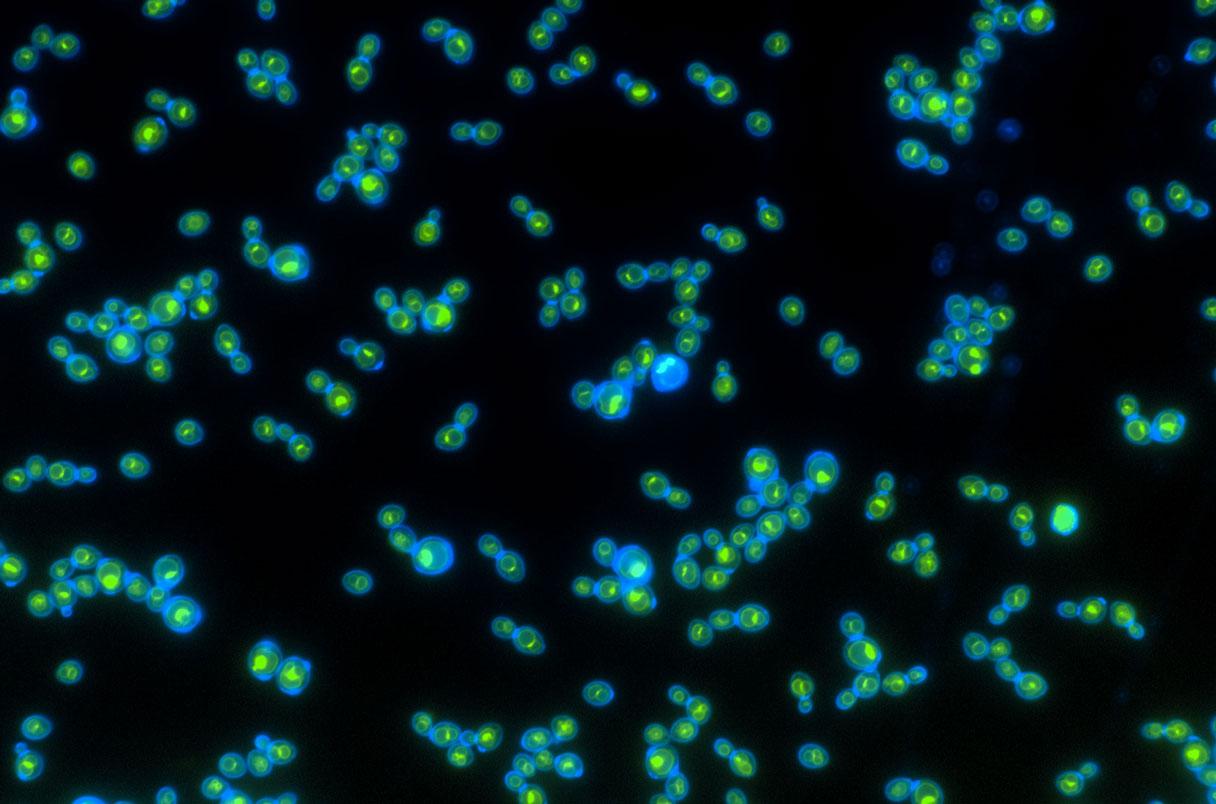2024-01-11 ジョージア工科大学
 Green rhodopsin proteins inside the blue cell walls help these yeast grow faster when exposed to light. Photo: Anthony Burnetti, Georgia Institute of Technology.
Green rhodopsin proteins inside the blue cell walls help these yeast grow faster when exposed to light. Photo: Anthony Burnetti, Georgia Institute of Technology.
◆この進化的に重要な特性を容易に酵母に備えることは、バイオ燃料の生産、進化、細胞の老化などの研究において重要な役割を果たす可能性があります。この研究は、酵母に光合成の特性を付加することで、新しいエネルギー源を提供するとともに、これがどのように進化してきたかを理解し、バイオプロダクションの向上に寄与する可能性があることを示唆しています。
<関連情報>
- https://research.gatech.edu/researchers-create-light-powered-yeast-providing-insights-evolution-biofuels-cellular-aging
- https://www.cell.com/current-biology/fulltext/S0960-9822(23)01744-X
ロドプシンの発現による酵母の通性光従属栄養への転換 Transforming yeast into a facultative photoheterotroph via expression of vacuolar rhodopsin
Autumn PetersonCarina BaskettWilliam C. RatcliffAnthony Burnetti
Current Biology Published:January 12, 2024
DOI:https://doi.org/10.1016/j.cub.2023.12.044
Highlights
•Vacuolar rhodopsins can be transferred from U. maydis to S. cerevisiae
•Adding rhodopsin makes S. cerevisiae a functional facultative photoheterotroph
•Rhodopsins do not require evolutionary optimization for fitness benefits
Summary
Phototrophic metabolism, the capture of light for energy, was a pivotal biological innovation that greatly increased the total energy available to the biosphere. Chlorophyll-based photosynthesis is the most familiar phototrophic metabolism, but retinal-based microbial rhodopsins transduce nearly as much light energy as chlorophyll does,1via a simpler mechanism, and are found in far more taxonomic groups. Although this system has apparently spread widely via horizontal gene transfer,2,3,4little is known about how rhodopsin genes (with phylogenetic origins within prokaryotes5,6) are horizontally acquired by eukaryotic cells with complex internal membrane architectures or the conditions under which they provide a fitness advantage. To address this knowledge gap, we sought to determine whether Saccharomyces cerevisiae, a heterotrophic yeast with no known evolutionary history of phototrophy, can function as a facultative photoheterotroph after acquiring a single rhodopsin gene. We inserted a rhodopsin gene from Ustilago maydis,7which encodes a proton pump localized to the vacuole, an organelle normally acidified via a V-type rotary ATPase, allowing the rhodopsin to supplement heterotrophic metabolism. Probes of the physiology of modified cells show that they can deacidify the cytoplasm using light energy, demonstrating the ability of rhodopsins to ameliorate the effects of starvation and quiescence. Further, we show that yeast-bearing rhodopsins gain a selective advantage when illuminated, proliferating more rapidly than their non-phototrophic ancestor or rhodopsin-bearing yeast cultured in the dark. These results underscore the ease with which rhodopsins may be horizontally transferred even in eukaryotes, providing novel biological function without first requiring evolutionary optimization.


